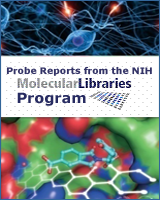From: Profiling a Selective Probe for RTG Branch of Yeast TORC1 Signaling Pathway

Probe Reports from the NIH Molecular Libraries Program [Internet].
Bethesda (MD): National Center for Biotechnology Information (US); 2010-.
NCBI Bookshelf. A service of the National Library of Medicine, National Institutes of Health.